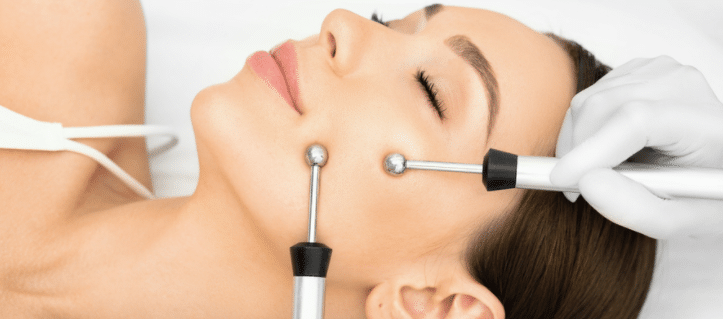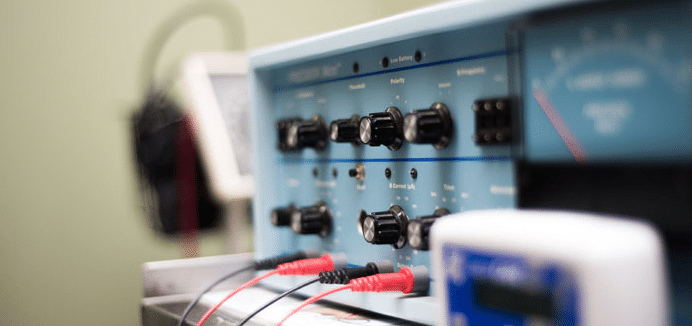What Is Microcurrent Facial and How it Works
When it comes to anti-aging and face lifting, there is a too-good-to-be true innovation that actually works since 1980s, that’s Microcurrent Facial, which uses low-grade electricity to promote cell growth in skin, and “train” your facial muscles to appear more lifted, tightened, and firm.
Microcurrent was actually first used in the 1980s, approved by the FDA as a treatment to stimulate muscles in people with conditions such as Bell’s Palsy and muscle paralysis. Once the face-lifting side effects were made apparent, it was then adopted as an anti-aging tool by beauty industry, and microcurrent facials have been rising in popularity ever since, while at-home tools like L&L Skin Facial Tools have become increasingly popular in everyday skin routines.
In this article, we break down everything you need to know about microcurrent facial before trying them out.
| What is Microcurrent Facial?
Microcurrent technology is a noninvasive therapy that sends out a low-voltage current that is similar to the natural electrical currents in the body.
The microcurrent sends a gentle electric wave through the skin tissue and is inducted into the human body, reaching the dermis layer, stimulating the electromagnetic field of the human body, and promoting ATP (ATP is the abbreviation of adenine nucleoside triphosphate, which is an unstable high-energy compound. It is composed of 1 molecule of adenine, 1 molecule of ribose and 3 molecules of phosphate groups, which release a large amount of energy during hydrolysis, which is the most direct source of energy in the organism, thereby promoting collagen production and improving vitality.
| What are the benefits of Microcurrent Facial?
Nowadays, this technology is used in many treatments in beauty salons, such as firming and removing wrinkles, diminishing dark circles, etc. Generally speaking, it has the following beauty benefits:
- Wake up cell vitality, promote skin cell movement, restore skin elasticity, and tighten skin.
- Increase blood circulation, enhance cell permeability, and effectively supply cell nutrients to human skin tissues.
- The electric ions generated by the microcurrent can penetrate deeply into the skin, reach the dermis layer, promote cell metabolism, synthesize collagen, and restore moisture, smoothness and tenderness.
- The microwave current makes the electric stimulation penetrate deep into the subcutaneous tissue to the muscle, which helps to repair the skin’s elastic fibers and the glial layer tissue, thereby reducing wrinkles.
| Precautions for the Microcurrent use
- Damaged, wounded, and acne-inflamed skin should not be treated with microcurrent.
- For microcurrent care, it is best to use it with gel, essence, collagen liquid, etc.
- It is forbidden to use it in parts of the body with metal parts, patients with heart disease (especially with pacemakers), and those with capillary expansion caused by disease.
| The Science Behind Microcurrent Facial
| A Nobel Discovery
The Nobel Prize for Physiology/Medicine in 1991 was awarded to Dr. Bert Sakman and Dr. Edwin Neher for their work regarding the response of microcurrent on the physiology of human cellular membranes. Microcurrent’s electrical impulses and various frequencies could instigate an open exchange in the “voltage sensitive cellular ion channels” within every cell. Cells communicate to conduct activity – microcurrent encourages “communication,” is capable of transmitting energy to adjacent cells, and provides the mechanism for propagating the electrical signals. Action potentials occur due to a rapid exchange between intracellular and extracellular ions. All cell membranes have multiple channels or gates that allow the flow of ions in and out of the cell.
Dr. Sakman’s and Dr. Neher’s research further illustrates that each cell contains between 20 and 44 different ion channels, each being specific for a particular nutrient: calcium, magnesium, sodium, and so on. They determined that electroporation of the cell via electrical stimulation could detoxify the cells through pulsation. Through electroporation it was possible to exchange both toxins and nutrients via cellular membranes. This discovery has had great implications for the medical field and represents opportunistic possibilities for the aesthetician working with problematic, oxygen deprived, or sun damaged skin.
| Science Tells a Story
The well-cited studies by Dr. Emil Y. Chi, Ph.D. at the University of Washington’s department of pathology revealed that skin tissue treated with microcurrent showed a 45 percent increase in the number of elastin fibers in the dermis and, on average, the length of the fibers doubled. Collagen thickness in the connective tissues increased 10 percent, protein synthesis by 70 percent, and there was an increase in cellular transport by 40 percent. Dr. Chi’s 2003 study further noted a 35 percent increase in peripheral blood circulation and lymphatic drainage. Clinical studies performed using microcurrent at Hong Kong’s Tuen Muen Hospital in 1988 indicated that lymphatic function increased by 28 percent on post-cancer patients suffering from lymphedema.
In 1982, a study by Dr. Ngok Cheng conducted at the University of Louvain, Belgium concluded that the higher the microcurrent values, the less beneficial the effect. The research determined that when microcurrent levels were used up to 500 microamps, skin regeneration increased almost 500 percent. Between 1000 and 5000 microamps, adenosine triphosphate generation plummeted, and at or above 5000 microamps, it dropped below baseline control levels. Illustrating once again that microcurrent responds at the cellular level and with less electrical stimulation than other types of current.




